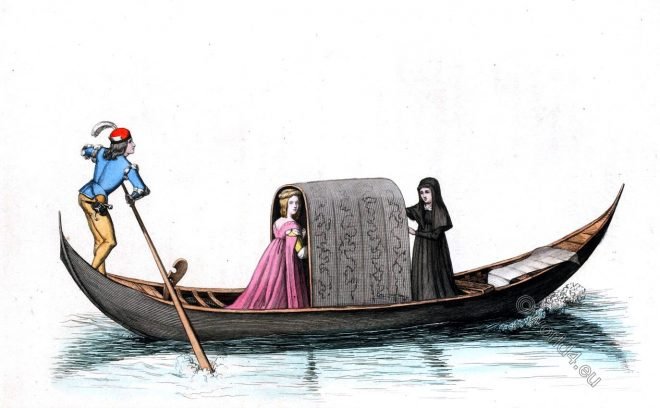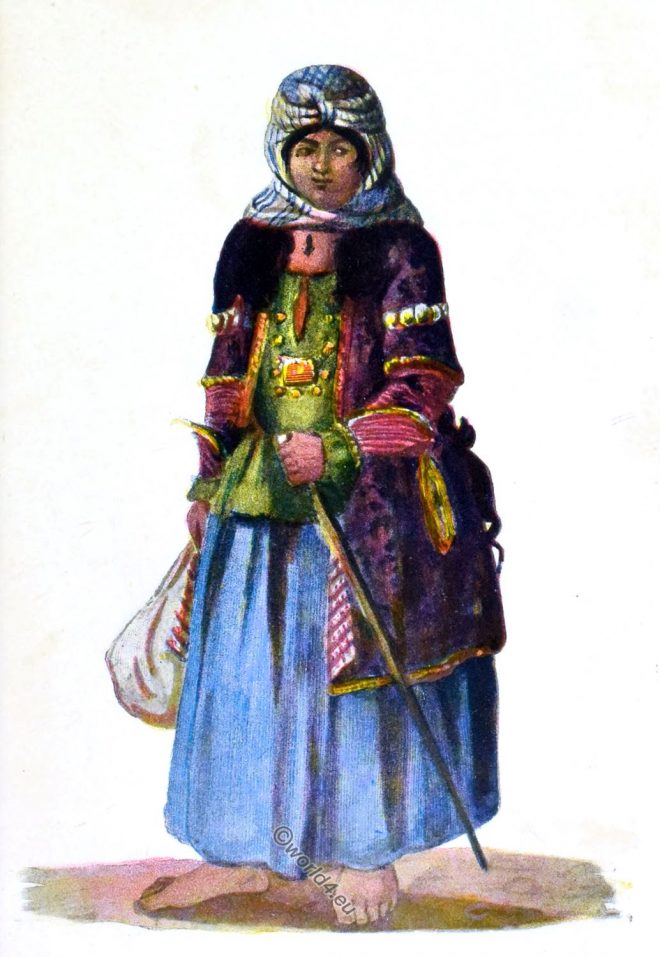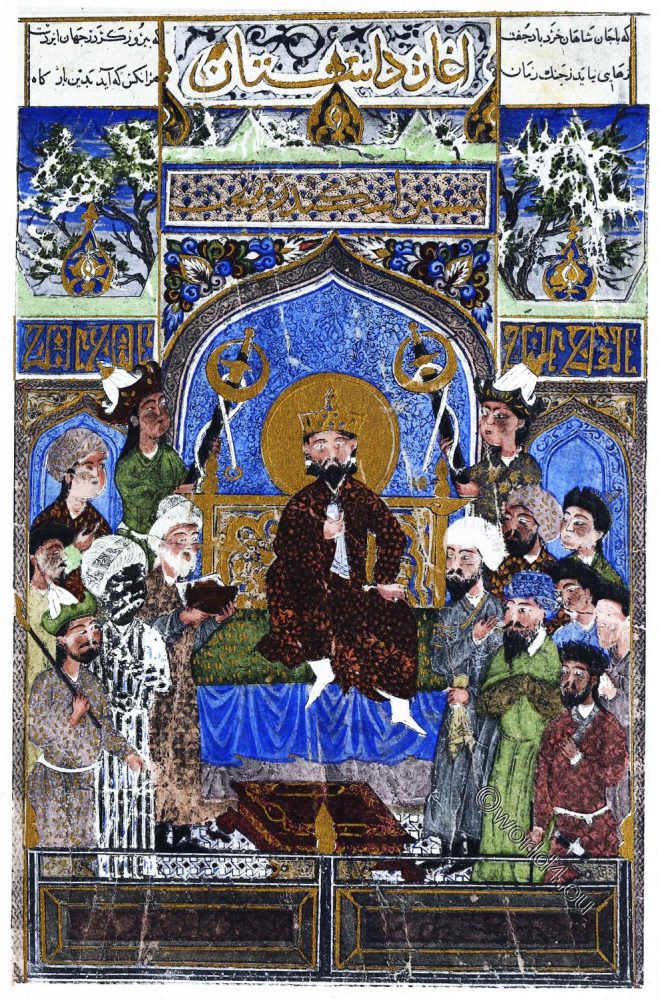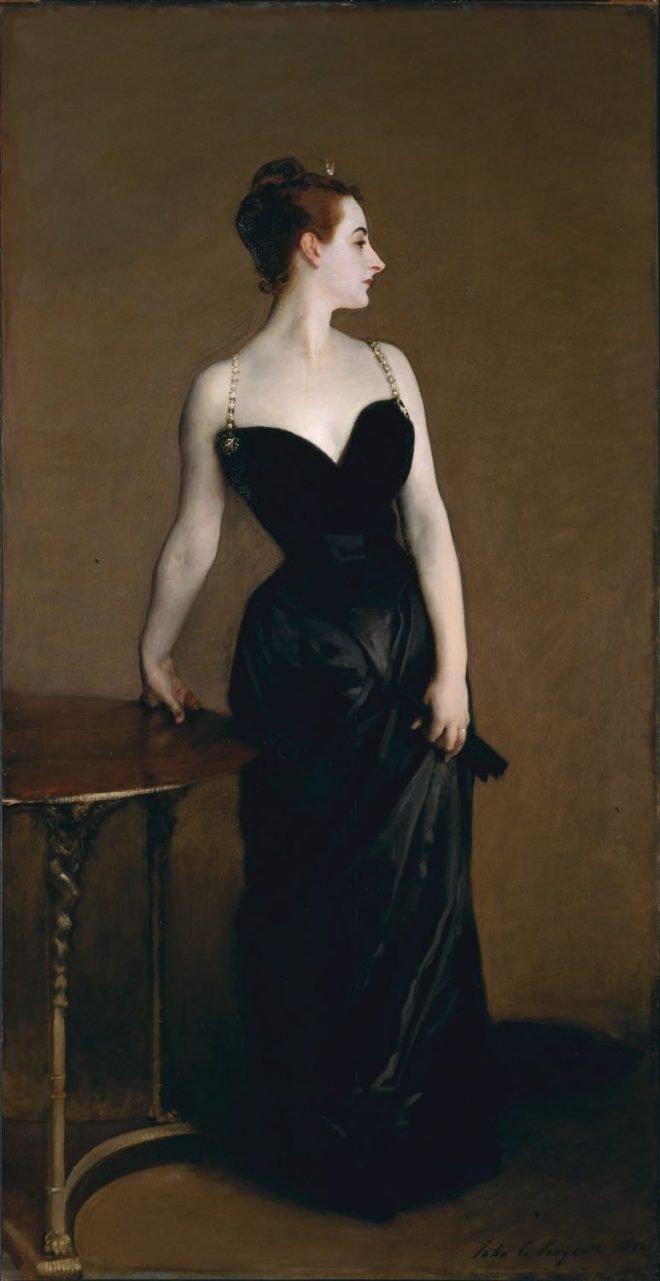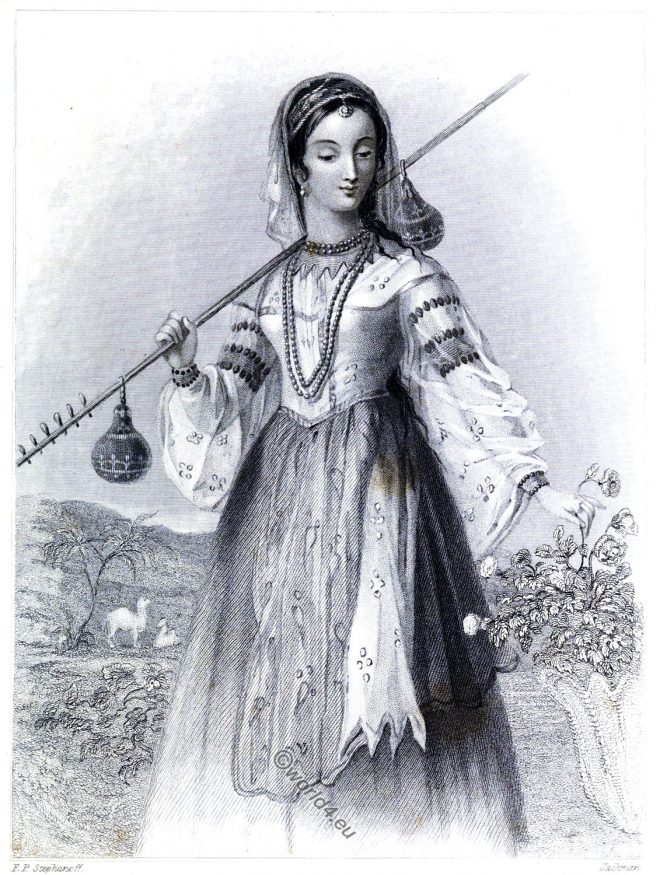The legionnaires: The triarii, the impediti, the eques, the Centurio, the phaleratus, the military tribune – Caesar Imperator. – The signifer, the vexillarius. The gladiators: the mirmillo, hoplomachos, the retiarius.
Roman headgear and hairdos of antiquity.
Rome. Headgear and hairstyles. Roman fashions after murals and bronzes. The causia, hairnets, wigs, caliendrum.
The Venetian gondola and gondolier in the 15th century.
Costumes historiques des XIIIe, XIVe et XVe siècles. Gondole Vénitienne. The Venetian gondola and gondolier in the 15th century.
The Public Walk at the Palais-Royal in 1792
The elegant Parisian society of 1792 in the gardens of the Royal Palace: elegant crowd, gathered under the trees, discussing and courting.
Port Bathy and Capital of Ithaca. The Neritos of Homer.
This is the port which is exhibited in the present view, and the lofty mountain beyond its entrance is the Neritos of Homer. Views in Greece by Edward Dodwell. London, 1821.
Elisabeth Amalie Eugenie, Duchess of Bavaria (also called Sisi).
Empress Elisabeth of Austria wearing a courtly gala dress designed by Charles Frederick Worth, 1865, with Diamond Stars by Franz Xaver Winterhalter, 1865.
Persian characters at the end of the 19th century. Travel to Iran.
Golnabat Khanoum (Mrs. Sugar-candi) of the Susmani tribe.
The Book of Kings. Page from the Shahnameh. Persian art, 15th century.
The Shahnameh is the longest epic poem in the world written by a single poet. It is considered as a literary masterpiece.
Madame X. Scandal of a portrait. Paris of the Belle Époque in 1884.
The portrait of Virginie Amélie Avegno Gautreau.
Madame X. or the exciting life in the Paris of the Belle Époque.
Persian woman costume. England Victorian Romanticism.
English Black Romantic. Idealised, representation of women at the beginning of the Victorian age.



